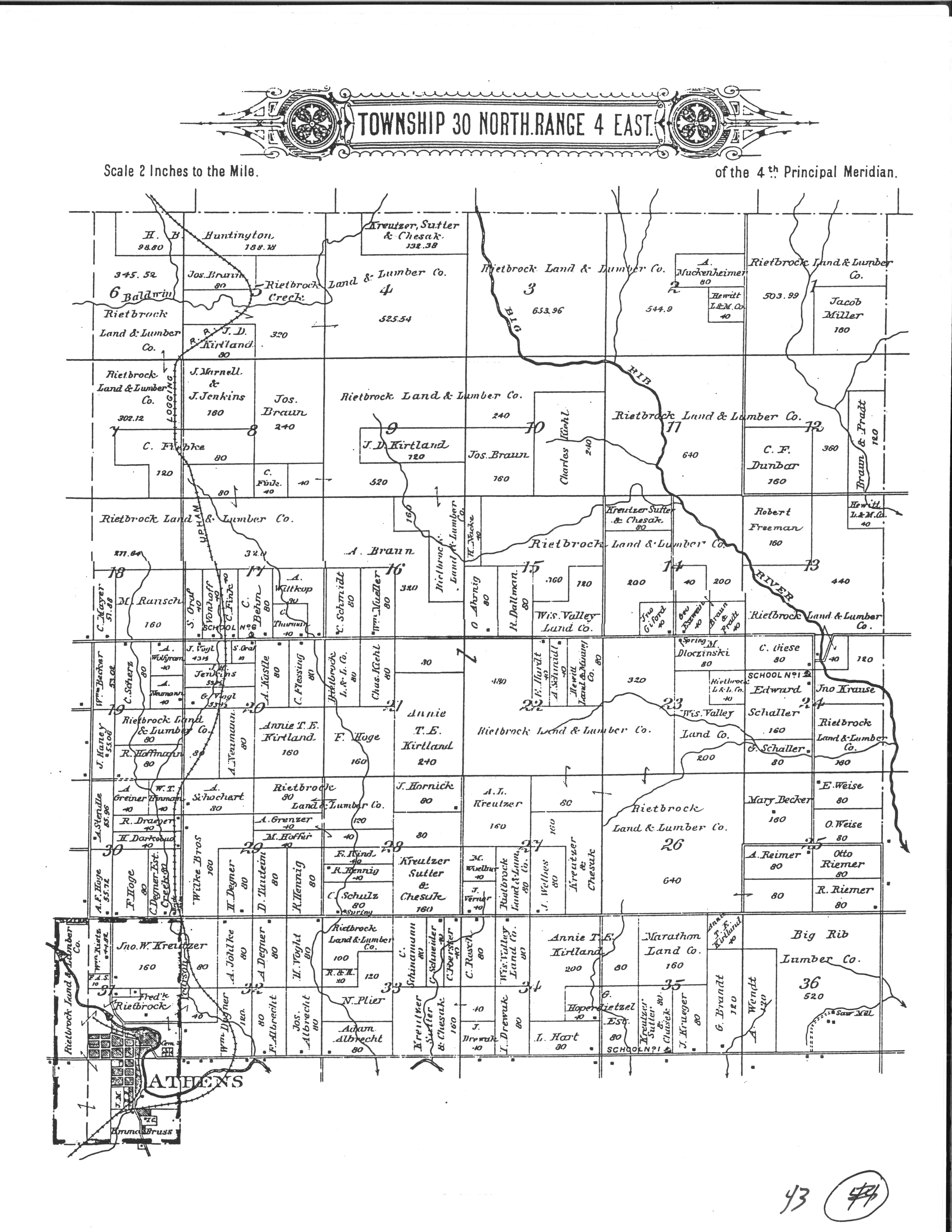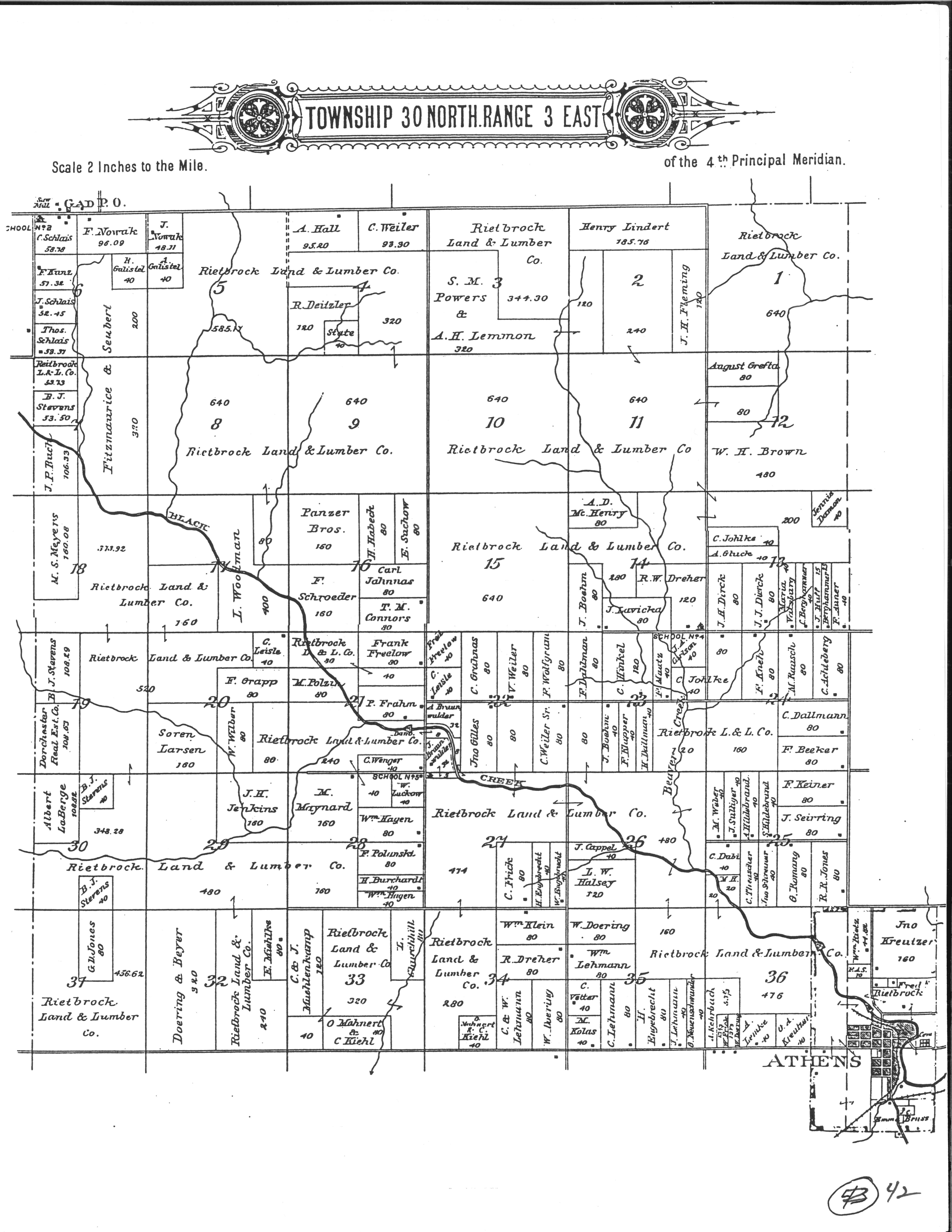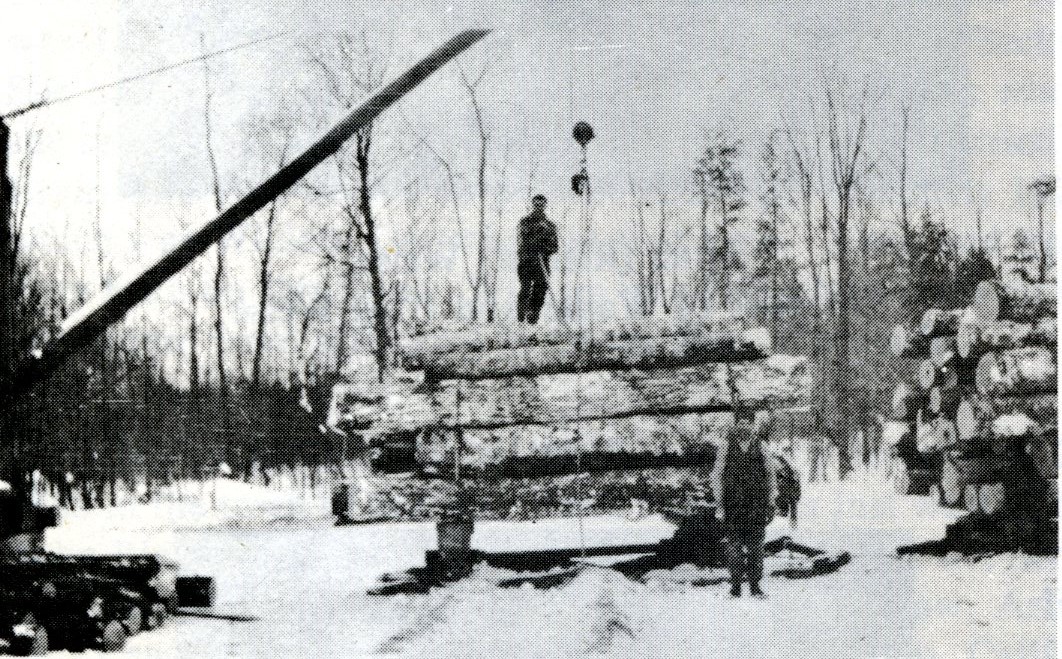Search our Places Database
Halsey, Township of
Return To List of Locations | Back to Search
For more information on this location, please contact our research library.

Author:
Mary Moltzan
Location:
T. 30 N. - R. 4 E.
Founded:
1878
Formallized:
1883
Background:
Population: 1905-555, 2000-645. Plus major part of Village of Athens: 1905-862, 2000-1095.
Halsey Township is part of thousands of acres purchased by Rietbrock Land and Lumber Co. The township was named after Pierson L. Halsey, a lawyer and business associate of Fred Rietbrock. Rietbrock encouraged and helped unemployed coal miners from Pennsylvania and other settlers from the Milwaukee area to move to this area to work in the woods and saw mills and later, as the land was cleared, to go into farming. Pennsylvanians came as early as 1896, though many did not stay. Logging and clearing the farmland proved harder than the work that the coal miners had come from.
Some of the earliest known settlers were John Miller and Fred Ziebel who came to the area in 1857, and Charles Riemer and Charles Lindeberg who reportedly settled in 1858.
The township was named after Pierson L. Halsey, a lawyer who didn't even live in the township. He was a justice of the peace in Rietbrock Township and owned 600 acres of valuable property in Halsey. He was also a partner of Frederick Rietbrock.
For information on Athens, see Athens, Village of
First Public Official:
William Rietz
Biography:
First Township Chairman.
Post Office Established:
March 18, 1895
First Postmaster:
Amalie Lamerdin
About The Post Office:
Lamerdin P.O. located in or near Section 11 was discontinued on August 27, 1896 with service from Athens.
Railroad:
Upham logging railroad ran north from Athens into Lincoln County. It later became part of the Abbotsford and Northeastern RR.
Churches:
A minister by the name of Lameridin (variously spelled Lammerdin and Lammertine) came with a group of settlers, and Fred Rietbrock built a home for him on the west bank of the Rib River. A large log building was used for a meeting place and a church was built, both in Section 11. Rietbrock paid his salary and the expenses of the church. This is the only church known to have been built in Halsey Township. Lamertine later moved his church to the Hamburg area and it became known as the Salem Church.
Schools:
The First school, used only a few years, was built in 1882.
1. District #1, Emory School, Section 24
2. District #2, Baldwin Hill School, Section 5
3. District #6, Wells School, Section 17
4. District #7, Fairview School, Section 29
5. Athens Public School, Section 31
All of the Halsey schools consolidated with the Athens School System in 1956.
Industry:
Logging
Sawmills
Brickyards
Blacksmith shops
John Esswing operated a tannery after arriving in the area in 1872.
Farming:
Farming was one of the two principal means of earning a living (the other was logging) in the early days. Many settlers logged and farmed until they had cleared enough land and then many turned to full-time dairy farming as logging declined. Some farmers continued doing both.
Halsey claims to be the home of cultivated ginsing and silver fox. John Esswein reportedly developed the art of Ginsing farming. Another resident, John Wittkopf, reportedly sold the first pair of silver fox to Herb Fromm of Fromm Brothers.
Stories:
The Pennsylvania miners found working in the logging camps far different from working in the mines. They had to start work in the woods before daylight and were kept at work till long after dark, stomping in the snow and cold for $15.00 - $18.00 per month. In the mines they earned more than that in a week, worked shorter hours, and did not have to work in the cold and snow.
Many of them quit before spring. However, those that did not work for Rietbrock had no credit and could not get provisions from the company's store in Athens, and they had no money to buy food elsewhere. Some men walked for miles to work for the neighboring farmers in exchange for flour, meat, rutabagas, potatoes, butter, and eggs - or whatever they could get. The women would go begging.
In the spring of 1897, times began to get better in Pennsylvania. Business was picking up. Many factories started operation and needed coal, so the miners in Pennsylvania started to work again. With their money and credit, they loaned money to their relatives and friends in Halsey. As soon as they had enough money, they packed up and made ready to go back to Pennsylvania. Rietbrock, however, would not grant them permission to use the railroad from Athens, so they hired farmers to take them to Marathon, Edgar, or Merrill. Many of them had fine furniture, in comparison to the meager furnishings of the Hamburg and Halsey pioneers. They couldn't afford to pay the freight on this back to Pennsylvania, so they gave much of it to the farmers for taking them to the train. They kept moving, one by one, all summer. By fall, of the sixty families, there were about a dozen left.




